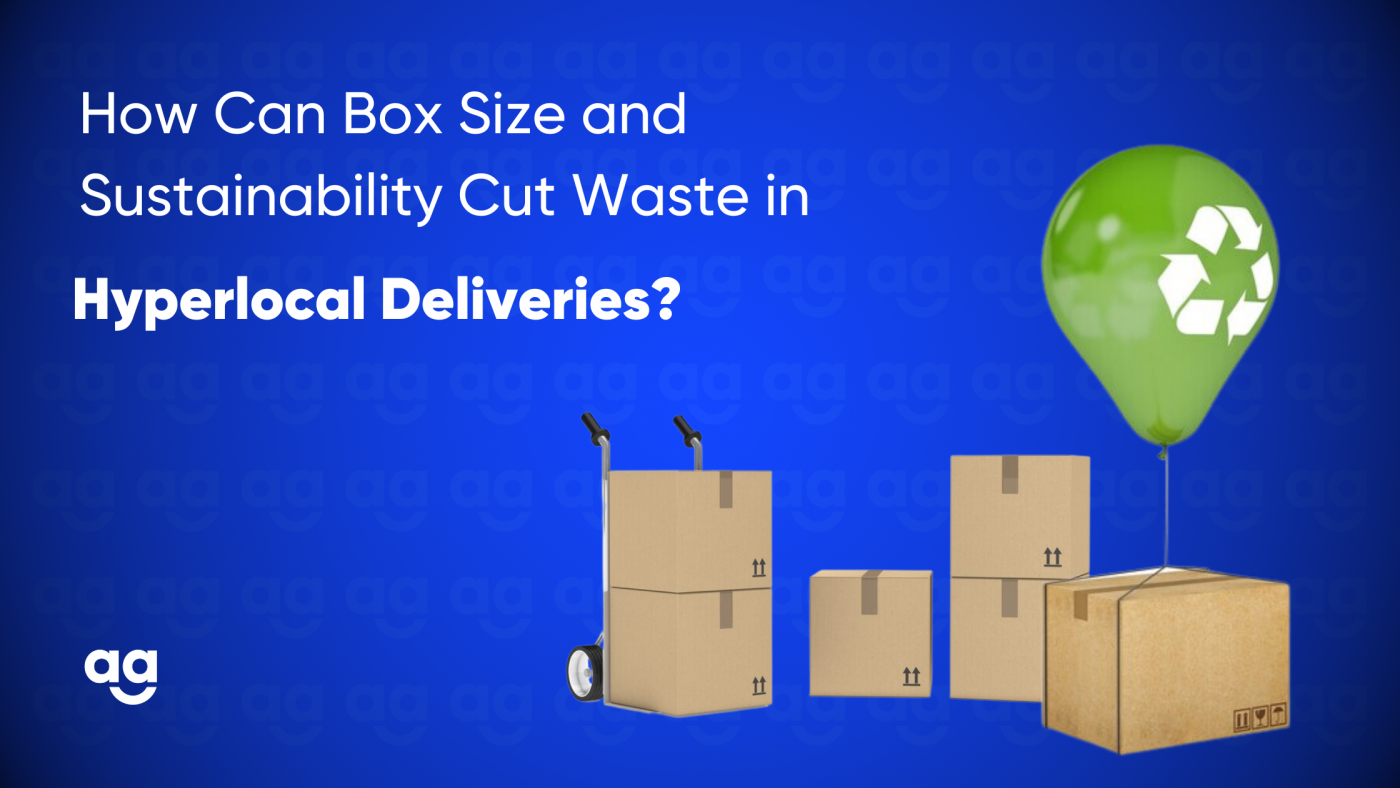Introduction
Sustainability is more than just a trendy word in today’s logistics industry; it’s a must. The environmental impact of logistics operations becomes more significant as companies work to meet the rising demand for quick and effective deliveries. Companies can have a significant impact by optimizing box dimensions and cutting waste.
We’ll look at how hyperlocal logistics can be essential to this sustainable journey in this article.
The Challenge of Packaging Waste
Cardboard boxes are being used much more frequently as a result of the boom in e-commerce and the advent of hyperlocal deliveries. The traditional one-size-fits-all method frequently results in inefficiencies and pointless waste, despite the fact that they are good for securing items during travel. Think about the following:
1.Overpacking:
When bigger boxes are used to package little things, empty space results and extra packing materials like bubble wrap and packing peanuts are used.
2. Inefficient transportation:
Delivery trucks must make more room for oversized boxes, which increases their fuel use and emissions. As a result, air pollution is increased in addition to operational expenditures.
3. Customer Experience:
Receiving a tiny item in a disproportionately huge box might disappoint the customers, which could result in negative customer experience.
Right Box Sizing the Solution
The solution to these issues is the practice of correctly sizing the boxes for logistics. This involves choosing the ideal box size for each shipment while taking into account the size and weight of the items being transported. Here are some ways that choosing the right size can encourage sustainability and reduce waste:
1. Reduce the Use of Packaging Materials
By selecting the right-sized box, businesses can reduce their use of excessive padding and cushioning materials like bubble wrap or foam. By doing this, it becomes less expensive while also having less of an impact on the environment during manufacture and disposal.
2. Effective Delivery Vehicle Use
The space in delivery vehicles is used most effectively and there are fewer trips required when the boxes are the proper size. Fuel usage, pollution, and operating costs all go down as a result.
3. Improved Client Experience
When goods come in the correct-sized boxes, customers recognize the company’s dedication to sustainable practices. In addition, it reduces waste and provides a more pleasurable unwrapping experience, which can both boost client happiness and brand loyalty.
The Role of Hyperlocal Logistics
With its emphasis on delivering items inside a constrained geographic area, hyperlocal logistics is ideally situated to successfully apply right-sizing practices. Here’s how it might change things:
1. Individualised Delivery Options
Local businesses in the area may work closely with hyperlocal logistics companies to develop customized delivery solutions. By being aware of the specific requirements of the community, they can ensure that packages are the appropriate size, reducing waste and enhancing local delivery routes.
2. Community Participation
Providers of hyperlocal logistics might interact with the neighborhood by planning campaigns to raise awareness of sustainability. They can enact change at the local level by promoting eco-friendly behaviors and increasing awareness of the effects of packaging waste.
Wrapping Up
In the realm of hyperlocal logistics, where speed and efficiency are paramount, the importance of sustainability should not be overlooked. Right-sizing boxes in hyperlocal logistics is not just about reducing waste but also about creating a positive environmental impact in local communities.
By choosing box dimensions that match the size and weight of the items being shipped, hyperlocal logistics providers can significantly contribute to the reduction of packaging waste.







 Shipping
Shipping







